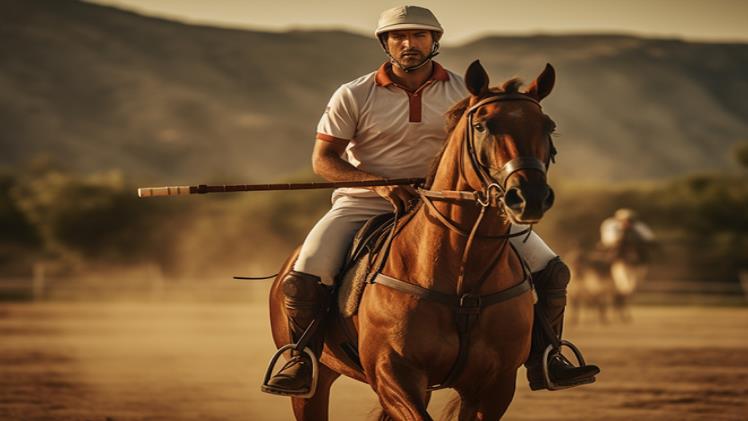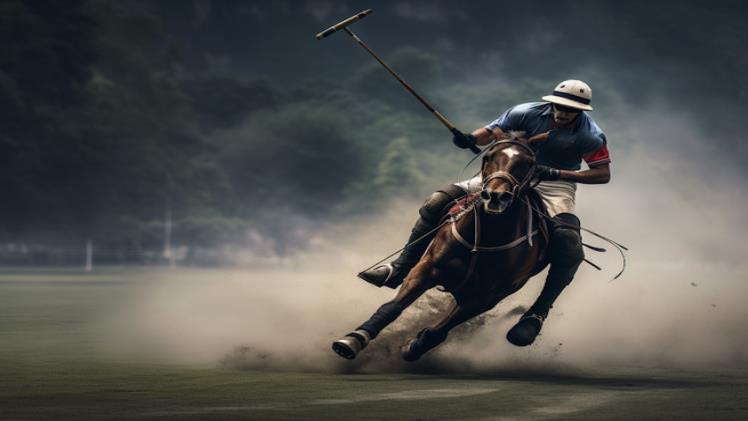Polo is an ancient team sport that involves players riding on horseback and using long-handled mallets to drive a ball down a grass field to score goals. Often referred to as the “sport of kings”, polo has a rich history spanning over 2,500 years. While polo often evokes images of nobility and wealth today, the sport has more humble beginnings starting in Central Asia. From its early days as a training exercise for cavalry units to its current status as a prestigious competitive sport played across the globe, polo has undergone many changes while retaining its competitive and regal traditions.
Origins and History of Polo
Polo’s Central Asian Roots
Polo originated among nomadic tribesmen in central Asia who played a rugged form of the game to hone their horseback riding and warfare skills. These early polo games used a crude wooden ball and simple sticks as hitting tools. As central Asian tribes and kingdoms interacted with neighboring civilizations, polo spread geographically and transitioned into Persian and Indian aristocratic circles.
Polo Enters Persia
In the 6th century, polo became a Persian royal pastime, popular among nobility and warriors. The Persians called the sport “chovgan” and began using a leather-stuffed ball that better withstood mallet hits. Persian royalty and noblemen formed some of the earliest polo clubs and sponsored early tournaments. This catapulted the sport’s growth in popularity and prestige.
The Game Spreads Through Asia and Europe
In the 13th century, polo further disseminated from Persia to other kingdoms in Asia. Chinese and Japanese emperors embraced it in their royal courts. British traders and colonists transmitted the game from Manipur in Northeast India to England where Queen Elizabeth I and subsequent monarchs became instant enthusiasts. As the British Empire expanded, settlers spread polo to Argentina, Australia, Egypt, Kenya, Pakistan and beyond.
The Development of Modern Polo
Standardization of Rules and Equipment
In the 19th century, the British began codifying and standardizing polo rules and equipment across clubs and matches. This increased structure, fairness and organization brought greater legitimacy. The informal handicap system was introduced, facilitating play across ability levels. In 1886, the Polo Association (later Hurlingham Polo Association) formed as the global authority.
The Formation of Polo Associations and Clubs
National and regional polo associations spearheaded by Argentina, Australia, England, India, Mexico, Pakistan and the United States started coordinating tournaments. Hundreds of private member-based polo clubs launched to provide exclusive access to topnotch fields and thoroughbred polo ponies for affluent patrons. Top clubs also served as hubs for elite social networking.
Traditions and Customs of the Sport
Attire and Equipment
Polo gear reflects the sport’s upper-crust roots. Custom dictates crisp white trousers, leather knee-high riding boots, colorful jerseys and protective helmets for matches. Players wield expertly crafted bamboo or carbon fiber mallets imported from Argentina. Groomed thoroughbred polo ponies with endurance and agility represent essential but pricey sporting assets.
The Pony and “Pony String”
Professionals often manage strings of polo ponies, with players utilizing fresh mounts in each of a match’s 7-minute chukkas. Top pony strings hold over 2 dozen well-trained animals. Patrons invest hundreds of thousands per horse for elite bloodlines boasting bursting acceleration, tight turning and fiery competitiveness.
Field Layout and Positions
Traditional fields span 160 yards by 260 yards, with goal posts set 8 yards apart. Each four-person team features two offensive players (Numbers 1 and 2) and two defensive players (Numbers 3 and 4) with flexibility to roam the entire field. Number 3 is the team captain directing on-field play.
Awards and Recognition
The handicap rating system remains integral for balancing team lineups, scoping player talent and determining match wagers. Individual player handicaps run from -2 to 10. The yearly Campeonato Argentino (Argentine Open) showcases the world’s finest polo. Top professionals become household names, but patron players also relish the glow.
Variations in Regional Play
Link on Image – https://polo-kirill-yurovskiy.co.uk/
Asian Styles of Play
Faster, high-action varieties played in Manipur and Pakistan emphasize individual stick and ball skills with smaller fields. Elephant polo, originating in Thailand and Nepal, features pachyderm mounts.
American and British Polo
Transatlantic polo adheres closest to classic rules and typically occurs at private clubs with strict sociocultural exclusivity. American polo hotbeds thrive in Florida, Texas and California due to amenable climates and affluent demographics.
Argentine Polo
Argentina dominates global polo thanks to the country’s ingrained polo culture tracing to early-20th-century British settlers. Argentina breeds perfect pony specimens and boasts over 300 private polo fields. Top Argentine players often journey overseas to play professionally.
Polo in the Present Day
Global Popularity and Reach
Today over 100 nations play polo, although competitive polo remains concentrated among a dozen countries including Argentina, Australia, Brazil, Chile, England, France, India, Mexico, Spain, Switzerland, the United Arab Emirates and the United States.
Polo as a High-Society Sport
Contemporary polo retains its air of privilege and luxury across various hotbeds. Leading polo clubs possess long waiting lists for deep-pocketed membership. Top professionals can earn millions in endorsements, club contracts and tournament purses. High-goal events attract elite spectators from business, entertainment and politics.
Polo Associations and Competitions
National associations coordinate local rankings and clubs. Multinational alliances like the Federation of International Polo oversee global governance. Prestigious tournaments like the Argentine Open, US Open and Gold Cup, Queen’s Cup, and others captivate audiences worldwide.
The Future of Polo
Growth Opportunities
Polo leaders continue expanding the sport’s footprint to new regions in Africa, China and Russia. They also aim to further popularize arena polo as an accessible, fast-paced version for new fans. Female participation continues rising across all levels.
Addressing Accessibility and Costs
The high costs of quality ponies, club memberships and lessons still restrict polo to the wealthy. But some advocates promote broadening youth access through nonprofit clubs offering affordable lessons and by schools adopting polo in physical education programs. Toned-down variances like collegiate club polo allow intercollegiate competition using donated ponies.
Conclusion
Polo has progressed remarkably from its militaristic steppe origins thousands of miles away to an iconic pastime synonymous with luxury and skill across Europe, the Americas and beyond. Both polo’s competitive essence and visual pageantry endure as singular in the sporting universe. Polo forever reflects powerful human connections with horses along with dreams of life’s privileged possibilities. For novices drawn to sample polo’s magic, many local clubs offer beginner sessions, lessons and youth camps. Arena polo too allows affordable first forays. But accessible or not, polo’s time-honored excitement and heritage continue alluring newcomers while captivating devoted patrons for generations.






